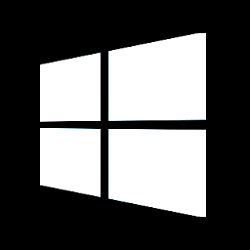How to Enable or Disable Changing Start Layout in Windows 10
The layout of your Start menu includes how you resized the Start menu or full screen Start, pinned items, how the tiles of pinned items are sized, arranged into groups, group names, and used in Live Folders.
This tutorial will show you how to allow or prevent changing the Start screen layout for specific or all users in Windows 10.
This doesn't affect users from being able to resize the Start menu.
You must be signed in as an administrator to set a default Start layout.
Contents
- Option One: Enable or Disable Changing Start Layout in Local Group Policy Editor
- Option Two: Enable or Disable Changing Start Layout for All Users using a REG file
EXAMPLE: Start layout in Windows 10
The Local Group Policy Editor is only available in the Windows 10 Pro, Enterprise, and Education editions.
All editions can use Option Two.
1 Open the all users, specific users or groups, or all users except administrators Local Group Policy Editor for how you want this policy applied.
2 In the left pane of the Local Group Policy Editor, click/tap on to expand User Configuration, Administrative Templates, and Start Menu and Taskbar. (See screenshot below)
3 In the right pane of Start Menu and Taskbar, double click/tap on the Prevent users from customizing their Start Screen policy to edit it. (see screenshot above)
4 Do step 5 (enable) or step 6 (disable) below for what you would like to do.
A) Select (dot) either Not Configured or Disabled, click/tap on OK, and go to step 7 below. (see screenshot below)
Not Configured is the default setting.
7 When finished, you can close Local Group Policy Editor if you like.
8 Restart the explorer process, sign out and sign in, or restart the computer to apply.
The downloadable .reg files below will add and modify the DWORD values in the registry keys below.
HKEY_CURRENT_USER\Software\Microsoft\Windows\CurrentVersion\Policies\Explorer
HKEY_LOCAL_MACHINE\SOFTWARE\Microsoft\Windows\CurrentVersion\Policies\Explorer
NoChangeStartMenu DWORD
(delete) = Enable
1 = Disable
HKEY_CURRENT_USER\Software\Policies\Microsoft\Windows\Explorer
HKEY_LOCAL_MACHINE\SOFTWARE\Policies\Microsoft\Windows\Explorer
LockedStartLayout DWORD
(delete) = Enable
1 Do step 2 (enable) or step 3 (disable) below for what you would like to do.
This is the default setting.
A) Click/tap on the Download button below to download the file below, and go to step 4 below.
Enable_changing_Start_layout.reg
Download
A) Click/tap on the Download button below to download the file below, and go to step 4 below.
Disable_changing_Start_layout.reg
Download
4 Save the .reg file to your desktop.
5 Double click/tap on the downloaded .reg file to merge it.
6 When prompted, click/tap on Run, Yes (UAC), Yes, and OK to approve the merge.
7 Restart the explorer process, sign out and sign in, or restart the computer to apply.
8 You could now delete the downloaded .reg file if you like.
That's it,
Shawn
Related Tutorials
- How to Set Default Start Layout for Users in Windows 10
- How to Backup and Restore Start Menu Layout in Windows 10
- How to Reset Start Menu Layout to Default in Windows 10
- How to Pin Sites to Start Menu with Microsoft Edge Chromium in Windows 10
Enable or Disable Changing Start Layout in Windows 10

Enable or Disable Changing Start Layout in Windows 10
How to Enable or Disable Changing Start Layout in Windows 10Published by Shawn BrinkCategory: Customization
11 Oct 2020
Tutorial Categories


Related Discussions





